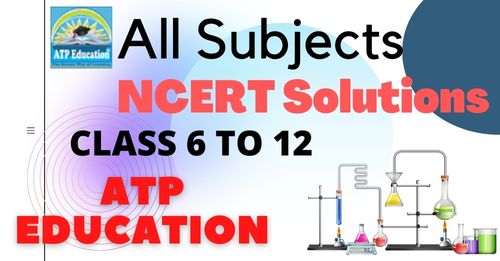1. Chemical Reactions And Equations Science Class 10 In English Medium Ncert Book Solutions NCERT Book Solutions
1. Chemical Reactions and Equations : NCERT Book Solutions Science class 10th:English Medium NCERT Book Solutions
NCERT Books Subjects for class 10th Hindi Medium
Chapter 1. Chemical Reactions and Equations NCERT Book Solutions : NCERT Book Solutions for class 10th. All solutions and extra or additional solved questions for 1. Chemical Reactions and Equations : NCERT Book Solutions Science class 10th:English Medium NCERT Book Solutions.. All ncert books and cbse syllabus are solved chapter by chapter and also exercise within chapter and exercise solved by our expert in Hindi and English Medium for studends.
NCERT books solved questions and answers 1. Chemical Reactions and Equations, 1. Chemical Reactions and Equations solved questions and answers, 1. Chemical Reactions and Equations in english Medium, NCERT Book Solutions for 10 Science, chapter and excercise for Science-NCERT Book Solutions , NCERT Book Solutions for class 10th, Science, Science class 10th, class 10th Science, All solutions and extra or additional solved questions for 1. Chemical Reactions and Equations, Science 1. Chemical Reactions and Equations, NCERT Book Solutions , Science class 10th, English Medium NCERT Book Solutions
1. Chemical Reactions and Equations
NCERT Book Solutions
Questions: Page 6 (chap-1)
Q1. Why should a magnesium ribbon be cleaned before burning in air?
Ans: A magnesium ribbon should be cleaned before burning in air so that it may come in the contact of air.
Q2. Write the balanced equation for the following chemical reactions.
(i) Hydrogen + Chlorine → Hydrogen chloride
Sol: H2 + Cl2 → HCl
H2 + Cl2 → 2HCl
(ii) Barium chloride + Aluminium sulphate → Barium sulphate + Aluminium chloride
Sol: BaCl2 + Al2 (SO4)3 → Ba SO4 + AlCl3
3 BaCl2 + Al (SO4)3 → 3Ba SO4 +2 AlCl3
(iii) Sodium + Water → Sodium hydroxide + Hydrogen
Sol: 2Na + H2O → NaOH + H2
2Na + 2H2O → 2NaOH + H2
Q3. Write a balanced chemical equation with state symbols for the following reactions.
(i) Solutions of barium chloride and sodium sulphate in water react to give insoluble barium sulphate and the solution of sodium chloride.
Ans: BaCl2(aq) + Na2 SO4 (aq) → Ba SO4 (s) + NaCl (aq)
(ii) Sodium hydroxide solution (in water) reacts with hydrochloric acid solution (in water) to produce sodium chloride solution and water.
Ans: NaOH(aq) + HCl (aq) → NaCl (aq) + H2O(aq)
Questions: Page 10 (chap-1)
Q1. A solution of a substance ‘X’ is used for white washing.
(i) Name the substance ‘X’ and write its formula.
Ans: Name the substance ‘X’ is Calsium Oxide (lime water) and its chemical formula is CaO.
(ii) Write the reaction of the substance ‘X’ named in (i) above with water.
Ans: CaO + H2O → Ca(OH)2
Q2. Why is the amount of gas collected in one of the test tubes in Activity 1.7 double of the amount collected in the other? Name this gas.
Ans: During the Electrolysis of water, hydrogen and oxygen is get separated by the electricity. Water (H2O) contains two parts hydrogen and one part oxygen. Since hydrogen goes to one test tube and oxygen goes to another, the amount of gas collected in one of the test tubes is double of the amount collected in the other.
Questions: Page 13 (chap-1)
Q1. Why does the colour of copper sulphate solution change when an iron nail is dipped in it?
Ans: When an iron nail is dipped in a copper sulphate solution, iron which is more reactive than copper it displaces copper from copper sulphate solution and forms iron sulphate, In this case the blue colour of copper sulphate turns into green, which is colour of iron sulphate.
Equation of this reaction:
CuSO4 + Fe → FeSO4 + Cu
(copper sulphate) (iron) (iron sulphate) (copper)
Q2. Give an example of a double displacement reaction other than the one given in Activity 1.10.
Ans: Sodium carbonate reacts with calcium chloride to form calcium carbonate and sodium chloride.
Na2CO3 + CaCl2 → CaCO3 + 2 NaCl
In this reaction, sodium carbonate and calcium chloride exchange ions to form two new compounds. Hence, it is a double displacement reaction.
Q3. Identify the substances that are oxidised and the substances that are reduced in the following reactions.
(i) 4Na(s) + O2(g) → 2Na2O(s)
(ii) CuO(s) + H2(g) → Cu(s) + H2O(l)
Ans:
(i) Sodium (Na) is oxidised as it gains oxygen and oxygen gets reduced.
(ii).Copper oxide (CuO) is reduced to copper (Cu) while hydrogen (H2) gets oxidised to water (H2O).
ATP Educationwww.atpeducation.com ATP Education www.atpeducation.com
ATP Education
See other sub-topics of this chapter:
1. Chapter Review class 10 Chap-1. Chemical Reactions and Equations
2. NCERT Book Solutions class 10 Chap-1. Chemical Reactions and Equations
3. Exercise Chap. 1 class 10 Chap-1. Chemical Reactions and Equations
4. Additional -Questions class 10 Chap-1. Chemical Reactions and Equations
5. Assignment class 10 Chap-1. Chemical Reactions and Equations
Advertisement
NCERT Solutions
Select Class for NCERT Books Solutions
Notes And NCERT Solutions
Our NCERT Solution and CBSE Notes are prepared for Term 1 and Terms 2 exams also Board exam Preparation.
Science Chapter List
1. Chemical Reactions and Equations
2. Acids, Bases and Salts
3. Metals and Non-metals
4. Carbon and its Compounds
5. Periodic Classification of Elements
6. Life Processes
7. Control and Coordination
8. How do Organisms Reproduce
9. Heredity and Evolution
10. Light-Reflection and Refraction
11. Human Eye and Colourful World
12. Electricity
13. Magnetic Effects of Electric Current
14. Sources of Energy
15. Our Environment
16. Management of Natural Resources


